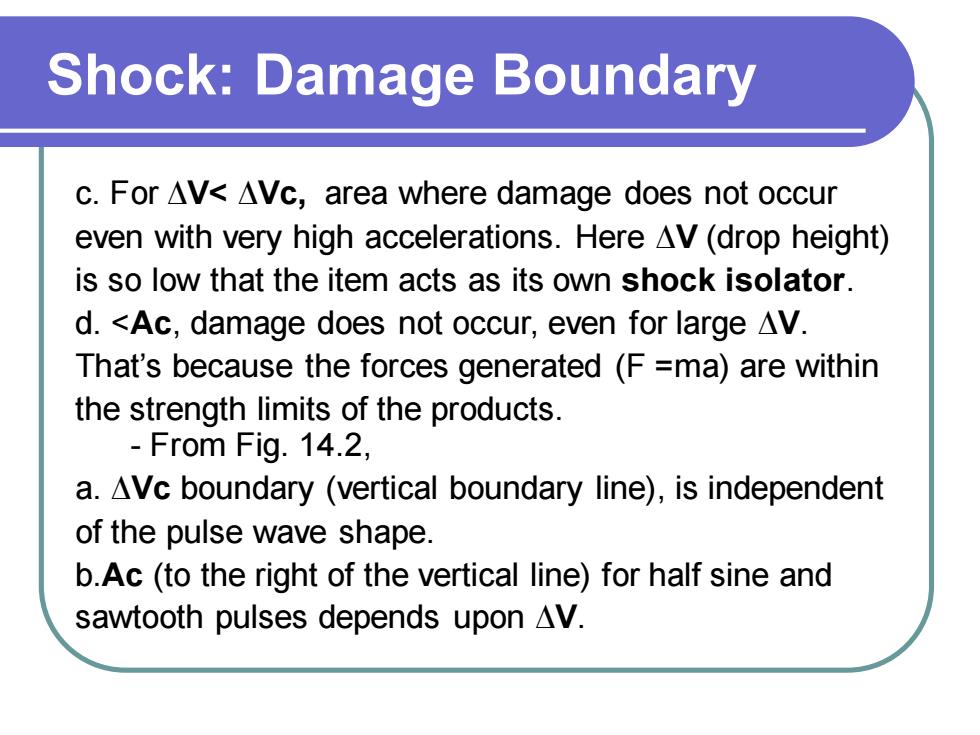正在加载图片...

Shock: Damage Boundary c. For ∆V< ∆Vc, area where damage does not occur even with very high accelerations. Here ∆V (drop height) is so low that the item acts as its own shock isolator. d. <Ac, damage does not occur, even for large ∆V. That’s because the forces generated (F =ma) are within the strength limits of the products. - From Fig. 14.2, a. ∆Vc boundary (vertical boundary line), is independent of the pulse wave shape. b.Ac (to the right of the vertical line) for half sine and sawtooth pulses depends upon ∆V.Shock: Damage Boundary c. For ∆V< ∆Vc, area where damage does not occur even with very high accelerations. Here ∆V (drop height) is so low that the item acts as its own shock isolator. d. <Ac, damage does not occur, even for large ∆V. That’s because the forces generated (F =ma) are within the strength limits of the products. - From Fig. 14.2, a. ∆Vc boundary (vertical boundary line), is independent of the pulse wave shape. b.Ac (to the right of the vertical line) for half sine and sawtooth pulses depends upon ∆V